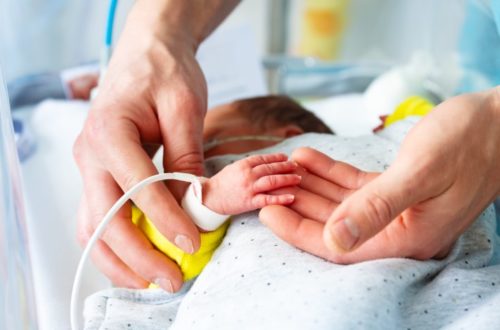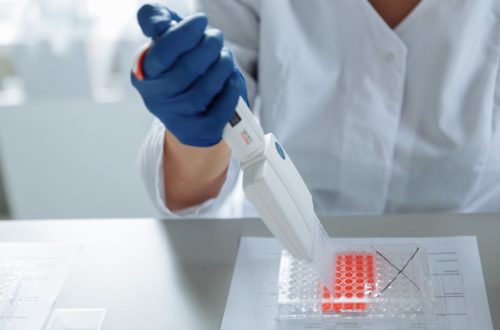The Future Is Personal: How Tech Is Bringing Personalized Health to Your Doorstep

Health care is finally learning your name—not just the one on your ID, but the patterns, preferences, and biology that make you you. After years of promises, the building blocks of personalized health have matured enough to matter in everyday life. Sensors notice small shifts before you feel them. Algorithms help clinicians connect dots across images, labs, and history. Genomics reveals why two people with the same diagnosis need different plans. And crucially, delivery is moving closer to home, turning bedrooms and pharmacies into mini-clinics. The result is a quieter, earlier, more tailored kind of care that aims to prevent problems rather than just react to them.
From Generic Guidelines to a Personal Baseline
The old model compared you to population averages: normal heart rate, normal glucose, normal blood pressure. Useful, but blunt. Now, continuous data from wearables and at-home monitors builds a personal baseline that understands your normal. A night of restless sleep, a small jump in resting heart rate, and a dip in activity might be meaningless in isolation; together they can flag a brewing infection or flare. When you share those signals with a clinician through your record, they arrive as a digest rather than a data dump, making it easier to act without an office visit.
Regulators are also getting more specific about how software can support decisions. The U.S. Food and Drug Administration tracks cleared AI and machine-learning tools and expects real-world monitoring for them, creating a pathway for digital helpers that augment clinicians without replacing them. You can explore that evolving landscape through the FDA on AI/ML-enabled medical devices.
Genomics Gets Granular—and Actionable
DNA once felt like a static code; now it’s becoming a living map for care. Pharmacogenomic reports suggest which medications are more likely to work for you and at what dose. Tumor sequencing reveals targetable mutations that can change a treatment plan overnight. The finest resolution comes from single cell sequencing which looks at gene activity in individual cells rather than averaging across tissue. That matters because early disease is patchy: a handful of rogue cells can behave very differently from their neighbors. With single-cell and spatial techniques, a biopsy can show not just “what” is there but “where” and “how” it behaves, pointing to therapies before symptoms escalate.
Population efforts amplify the impact. Programs that enroll broad, diverse cohorts and return results responsibly help ensure personalized medicine works for everyone, not just those who show up in historic datasets. The U.S. National Institutes of Health’s All of Us Research Program is building one of the most diverse health databases ever, aiming to link biology, environment, and lifestyle with outcomes so that future risk tools and treatments don’t leave communities behind. As these resources grow, expect screening to feel less like a one-size recommendation and more like a map tailored to your genetics and context.
Care That Finds You: Home Diagnostics, Pharmacy Hubs, and Just-In-Time Clinics
Personalization isn’t only about what we measure; it’s about where and when we deliver care. Rapid tests that once required lab benches now live on pharmacy shelves or arrive in the mail. Molecular cartridges bring near-PCR performance to clinics and urgent-care counters, shaving days off time to treatment. Remote therapeutic monitoring allows clinicians to titrate medications based on real-world data rather than occasional office snapshots. Neighborhood pharmacies are expanding into vaccination, testing, and chronic-care management, acting as local health front doors. For those with mobility or time constraints, that convenience isn’t cosmetic—it’s access.
The rise of virtual specialty consults adds expert eyes to local care. A primary-care clinician can loop in a cardiologist to review a home ECG trace or an endocrinologist to optimize a continuous glucose profile without sending you across town. When physical exams or procedures are needed, pop-up and mobile clinics fill the gap, bringing imaging and infusions closer to where patients live. The thread through all of this is triage: using your data to escalate when needed and stand down when not, so personalization feels like calm rather than noise.
Guardrails: Privacy, Transparency, and Equity
Trust is the currency of personalized health. People will only share data if they understand who can see it, how it’s used, and what they get back. That means plain-language consent, easy controls, and default-secure design. It also means transparency from algorithms: not just a prediction, but an explanation a clinician can validate. High-level guidance from global bodies stresses these principles. The World Health Organization’s work on digital health emphasizes safety, equity, accountability, and people-centred design—useful anchors as countries scale tech-enabled services. See the WHO’s overview of digital health for the bigger picture.
Equity is a design choice, not an afterthought. Devices should perform across skin tones and body types; datasets should reflect the populations they aim to serve; language access should be standard. When systems are built this way, personalization doesn’t widen gaps—it closes them. And when people can see their own data and co-produce plans with clinicians, adherence and outcomes tend to improve, because the plan finally fits their life.
What Tomorrow Looks Like
Imagine a subtle change in your sleep and temperature prompts a quick home test, which returns a result and kicks off a pharmacist-led consult that same afternoon. An app nudges fluids and rest, while a short course of medication is delivered that evening. If you’re at higher risk, a home nurse checks in the next day. Your primary-care team sees all of it in context, not as a flurry of messages but as a single, readable story. If anything looks off, an AI assistant flags it and cites the evidence, and you and your clinician decide together whether to escalate. For chronic conditions, the loop is similar but slower and steadier, adjusting therapy based on your personal baseline rather than a generic target.
Wrap Up
None of this replaces the human relationship at the core of care. It strengthens it, giving clinicians better tools and patients more agency. The frontier is not a flashy gadget; it’s a coordinated, respectful system that recognizes variation and designs around it. Personalized health, delivered to your doorstep, isn’t a prediction anymore. It’s a plan—one that gets better the more it learns from you, and one that keeps the promise of modern medicine: the right care, for the right person, at the right time.
Would you like to receive similar articles by email?





